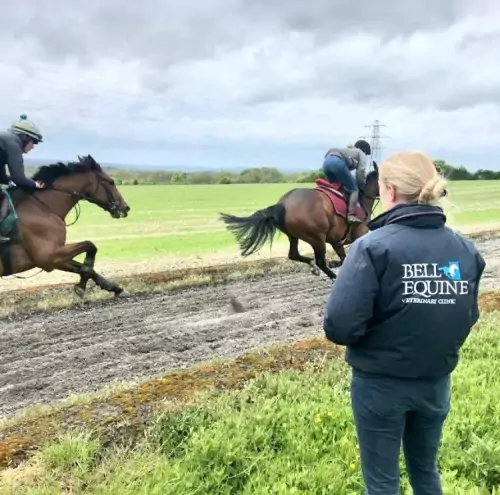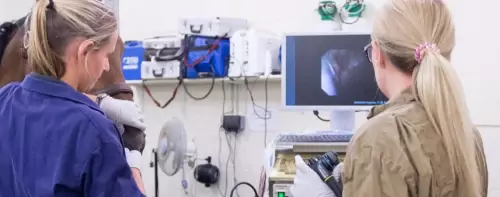Endoscopy allows direct visualisation of certain otherwise inaccessible areas of the body
The videoendoscopy system allows the image to be displayed on a TV screen, thereby enabling the client as well as the vet to observe and discuss the case at the same time. Many procedures are performed with a 1.4 metre endoscope, which permits evaluation of the upper respiratory tract (including the pharynx, larynx, guttural pouches and trachea), the urethra and bladder of both males and females, and the cervix and uterus of mares. The 3.0 metre endoscope is used to examine the oesophagus, stomach, upper duodenum, and the bronchi. Endoscopy is an essential part of the evaluation of (among others) horses with poor performance, upper airway obstructions and abnormal respiratory noises, many lung diseases, gastric (stomach) ulcers, many urinary tract diseases.

We now have an overground endoscope available for the diagnosis of upper respiratory tract disorders in exercising horses
This complex equipment allows us to see inside the horse’s larynx and pharynx during ridden exercise and assess their function. The horse works with the tiny endoscope threaded up the nose, which is surprisingly well tolerated.
Then, while the horse is being ridden, the images are recorded via a tiny computer attached to the saddle, then, via sophisticated blue tooth technology, the vet can view what is happening inside the horse in real time. Horses can be exercised in our arena or taken to gallops elsewhere, where a faster competitive exercise test can be performed. This equipment has already greatly increased our ability to diagnose the cause of respiratory noises and poor performance in equine athletes.
If you would like to refer a horse, please contact the hospital and speak to Anna Taylor on 01622 813700.

